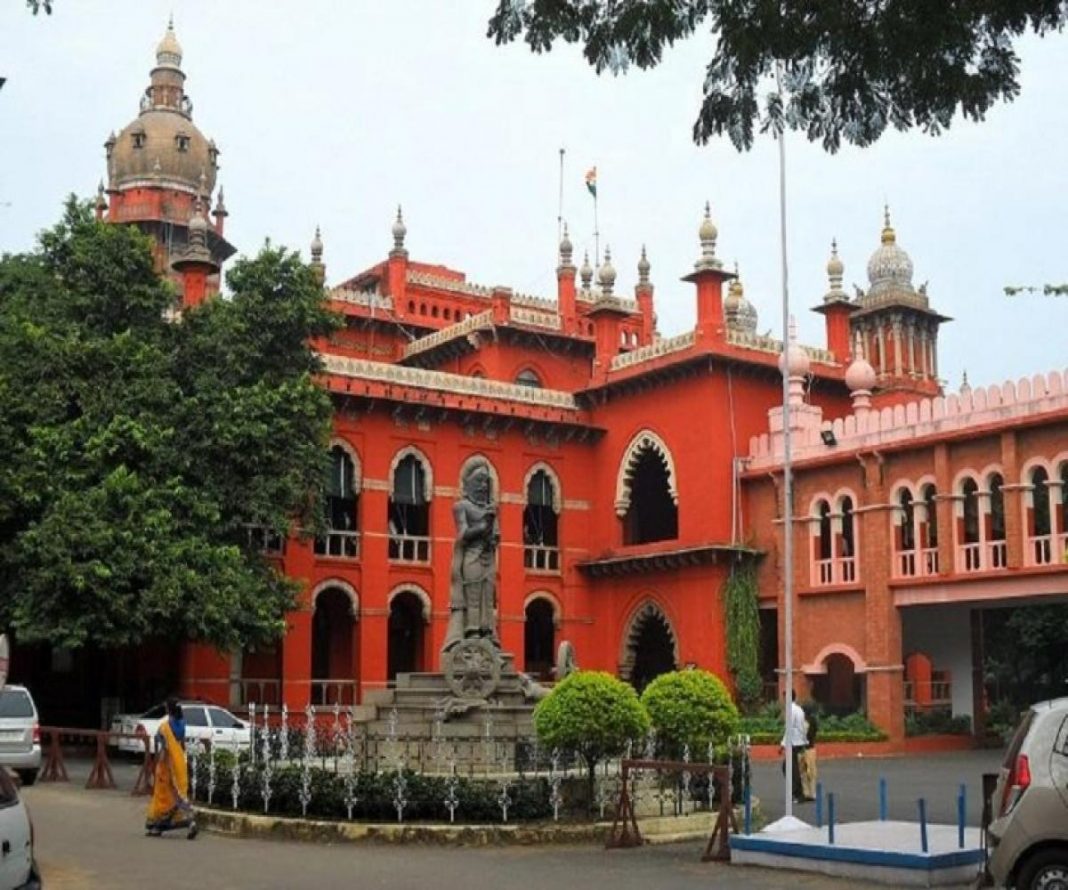The Madras High Court directed the Principal Chief Conservator of Forests to prepare a catalogue of all captive elephants in the State. The Division Bench of Chief Justice Sanjib Banerjee and Justice PD Audikesavalu passed this order while hearing a petition filed by Rangarajan Narasimhan.
In this case, a Powerpoint presentation has been made in the course of the virtual hearing by Prakash of Elsa Foundation. The presentation has two segments. In the first, some perceived scientific data have been attempted to be furnished, while, in the second, violations of the laws of this country while capturing elephants or keeping elephants in captivity or trying to domesticate elephants have been pointed out.
The presentation claims that there is widespread abuse of authority by forest officials across the country and the virtual trading in elephants.
In the matters, Rangarajan Narasimhan, who is a regular petitioner in person in PILs pertaining to temples and Hindu religious practices, including temple elephants, claims that the two elephants at the Sri Rangam temple who are without their regular mahouts are in grave distress.
Earlier, Narasimhan had also complained of the elephants kept in captivity by forest officials being kept away from public view and being ill-treated at forest camps. The Court said that, in the course of the proceedings, a concrete suggestion has come from the Rangam temple to the effect that such a temple has excess land near the temple and close to the Cauvery where the elephants can be housed in a forest-like habitat and taken to temples only for ceremonial purposes.
The Court further said that the suggestion is a welcome departure, it is also time to re-think whether, in the light of the law in the country, elephants can be subjected to the ignominy of participating in temple celebrations or temple rituals and whether such activities are any better than elephants being used for begging on streets. Religious sentiments must, at times, yield to reason and the animal’s point of view, if at all the same may be perceived, may also be taken into consideration upon obtaining scientific and expert advice in such regard.
Also Read: Supreme Court issues notice in plea of BA final year student rusticated for anti-CAA protest
The Court noted, “At least, one set of parties or petitioners questions the very basis of the underlying theme in the presentation made on behalf of Elsa Foundation. Such party seeks to suggest that elephants have been domesticated and used traditionally in religious and cultural programmes for years and, if well treated, there may not be any conflict between man and the elephant, even if the elephant is subjected to life among humans and in human habitat.
At the same time, there are many captive elephants, whether with temples or with individuals or, as some suggest, actually owned by individuals but allowed to be kept at temples as it may suit both parties. In addition, there may be elephants used by forest officials. There may also be elephants in distress and who may not be fit or equipped to return to the wild.”
The Bench stated that the Principal Chief Conservator of Forests will prepare a catalogue of all captive elephants in this State. Video-recordings of all such elephants, together with complete profile of each elephant, including the age, sex, lineage, if possible, should be indicated. Every endeavour should be made to indicate how the elephant came to be captured or domesticated. The exercise should be completed by obtaining video-recordings of all the captive elephants in the State and providing the profile features in course of such video-recording or otherwise.
The Court observed, “As far as the temple elephants are concerned, the Principal Chief Conservator of Forests should assign appropriate officials, along with Doctors from the relevant areas, to inspect the elephants and ascertain the state of their health. This exercise may be conducted for all captive elephants in the State, but beginning with elephants in the temple.
The number of elephants available with the forest officials should be indicated with a similar profile and the history of how the animal came to be captured or used by forest officials. It is also necessary to ascertain whether any practice continues in which elephants are captured today, if only for the purpose of use by forest officials; and the permissibility thereof.”
Also Read: Madras HC dismisses PIL against appointment of Additional AGs, says no merit in plea
“Several aspects of how elephants are traded in by forest officials have been indicated in the presentation made by Elsa Foundation. The Principal Chief Conservator of Forests should respond to such aspects of the matter by way of a report that may be filed. At any rate, the video recordings as sought by this order should also be accompanied by a small report detailing how the video recording was prepared, so that an element of accountability and authentication is evident,” the order reads.
The Court ordered that the appropriate departments of the State Government, be it the Animal Welfare or Animal Husbandry or the like department, should extend all cooperation. The Animal Welfare Board of India, and if there is any State level corresponding body, should be kept informed of the matters for rendering science based assistance in the conduct of the matter and the treatment of elephants and in particular and wildlife in general.
The Court has fixed the next hearing of the petition on September 24.


